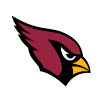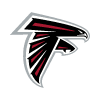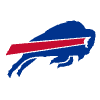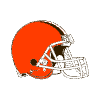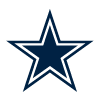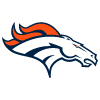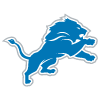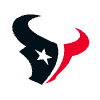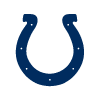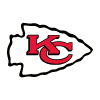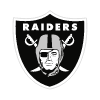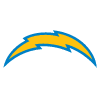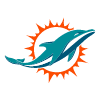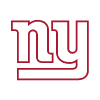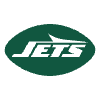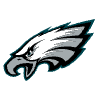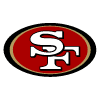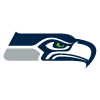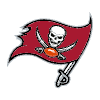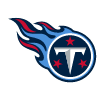2022 NFL Draft: Day 1 quick-snap grades for all 32 teams
Grading teams’ drafts immediately after the event is necessary in order to provide the proper evaluation of their actions in the moment. Waiting three years to evaluate draft classes, without accounting for how the decision was viewed at the time, usually leads to revisionist history.
If a prospect is considered a great pick the day of the draft but doesn’t work out in the long run, that’s a completely different evaluation of his new team’s decision than identifying a player who was considered a reach at the time he was picked. Immediate draft grades provide a foundation for future evaluations.
These 2022 NFL Draft quick-snap grades are an indication of whether I think a prospect’s selection is of appropriate value given his college film and athleticism scores. Trades are also factored into these grades, both for picks and players, as they help determine the future of a franchise as much as draft selections.
Draft pick
- None
Analysis: Arizona traded the No. 23 overall pick for Ravens receiver Marquise Brown and a third-rounder (No. 100). Even though Brown hasn’t been a consistent playmaker in Baltimore, I understand why Arizona made this deal. QB Kyler Murray is familiar with Brown from their days in Oklahoma. The Cardinals get the deep threat they lacked to complement DeAndre Hopkins and last year’s second-round pick, Rondale Moore.
Related Links
- The First Read: Winners and losers from Round 1 of the 2022 NFL Draft
- 2022 NFL Draft: Kyle Hamilton, Jermaine Johnson among Day 1's top value picks
- Best prospects available in the 2022 NFL Draft
Draft pick
- USC WR Drake London (No. 8 overall)
Analysis: London has been compared to Chargers WR Mike Williams. The former USC star’s height and strong hands give him a large catch radius on the outside, which he was using to his advantage until an ankle injury ended his season prematurely. Pairing London with TE Kyle Pitts will cause major problems for defenses lacking size in the secondary.
London didn’t run a 40-yard dash at the NFL Scouting Combine or his pro day, which means the Falcons don’t really know how fast he is. Regardless, Williams wasn’t a burner at Clemson and still manages to win outside with regularity. Jameson Williams, who went 12th overall to Detroit, could end up being a better receiver, though it’s hard to fault a team for not spending a top-10 pick on a receiver coming off an ACL tear.
Draft pick
- Notre Dame S Kyle Hamilton (No. 14 overall)
- Iowa C Tyler Linderbaum (No. 25 overall)
Analysis: The Ravens have to be thrilled with Hamilton falling to them. Forget his 40-yard dash time, which drew a lot of poor reviews this spring. Hamilton showed great instincts and intelligence in the Notre Dame secondary. His height and length make him a solid tackler in the open field and his range is excellent. I believe he will be a long-time playmaker in Baltimore.
Trading Marquise Brown to the Cardinals made a lot of sense to me. Gaining the 23rd overall pick in that deal, the Ravens then traded back with the Bills to get another fourth-round pick and the opportunity to select a new center in Linderbaum. I projected the team would trade down in the first round and pick Linderbaum months ago. He’s not a big center, so he’ll need to make sure he anchors well against NFL nose tackles. But Linderbaum’s strong hands, quick feet and intelligence make him an excellent pick. The team has to hope he’s a similar find to former All-Pro offensive lineman Marshal Yanda, who also played at Iowa and was a Ravens third-round round pick in 2007.
Draft pick
- Florida CB Kaiir Elam (No. 23 overall)
Analysis: Cornerback was the team’s biggest need after Buffalo lost Levi Wallace in free agency. General manager Brandon Beane saw the first-round CB market drying up, so he moved up two spots (giving up a fourth-round pick in the trade with Baltimore) to select Elam. The former Gator does not back down from any receiver on the outside. He proved his speed with a sub-4.4 40-yard dash at the combine, and his intensity and short memory on the outside will be welcomed by the Bills.
Draft pick
- N.C. State OT Ickey Ekwonu (No. 6 overall)
Analysis: It’s easy to love Ekwonu because he is a beast in the run game (both in the box and downfield against smaller defenders in space) and has the agility, anchor and length to hold off NFL-caliber edge rushers. The Panthers fill a major need with the former N.C. State star. He will help whichever quarterback competes with Sam Darnold for the starting gig in the fall and can lead the way for RB Christian McCaffrey.
Draft pick
- None
Analysis: The Bears did not have a first-round pick this year because they moved up in the 2021 draft for quarterback Justin Fields. That deal made sense, even though the team’s lack of success last season resulted in the Giants getting a top-10 selection. Fields has a chance to be a very good starting quarterback if new GM Ryan Poles surrounds him with better talent.
Draft pick
- Michigan DB Daxton Hill (No. 31 overall)
Analysis: Hill can play anywhere in the secondary. If Jessie Bates, who received the franchise tag this offseason, eventually moves on as a free agent, Hill could end up filling the void at safety full time. With the Ravens taking Tyler Linderbaum, who would have been a nice fit in Cincinnati, off the board six picks earlier, Hill was a sensible pick.
Draft pick
- None
Analysis: The Browns traded their first-round pick this year, as well as four additional picks (including first-rounders in 2023 and 2024) to Houston for quarterback Deshaun Watson and a 2024 fifth-round pick. Cleveland has its quarterback, but I believe the price was too high for Watson, who is currently facing 22 civil lawsuits alleging sexual assault and misconduct, as well as potential discipline under the NFL’s personal conduct policy pending the outcome of an ongoing league investigation.
Draft pick
- Tulsa OT Tyler Smith (No. 24 overall)
Analysis: Smith showed very good athleticism for a 324-pounder at Tulsa and at the NFL Scouting Combine but is an extremely raw talent. His power was overwhelming against most of the college competition he faced, so the Cowboys decided to take a shot on the upside to hope he can become a force in time.
Draft pick
- None
Analysis: The Broncos traded their first-round pick in the deal for Russell Wilson. For a team lacking a strong option at quarterback since Peyton Manning retired, it was a smart move that will allow Denver to compete in a very strong AFC West.
Draft pick
- Michigan Edge Aidan Hutchinson (No. 2 overall)
- Alabama WR Jameson Williams (No. 12 overall)
Analysis: The Lions made the safest pick possible by rolling with the home-state hero in Hutchinson. He’s coveted for his strength against the run and relentless pursuit of quarterbacks from a hand-down or stand-up position — as well as his football intelligence picking up screens and misdirection.
It’s too early to make a complete evaluation of the Matthew Stafford trade, which netted the Lions an extra first-round pick this year. Of course, seeing Stafford win a ring in his first year in Los Angeles while the Lions floundered to a 3-13-1 record was not a great start. Detroit packaged that pick in a deal with the Vikings to land the draft’s top receiver in Williams at the 12th overall selection. If he didn’t get hurt in the national title game, Williams would have been a top-10 pick because of his speed, reliable hands, stop-start ability and toughness. I love the pick in terms of talent, and the injury shouldn’t be a long-term issue, but he’ll need to become an elite playmaker to justify the price.
Draft pick
- Georgia LB Quay Walker (No. 22 overall)
- Georgia DT Devonte Wyatt (No. 28 overall)
Analysis: The Packers received first- and second-round picks from the Raiders for Davante Adams, which is about as good a return as they could have hoped for under the circumstances.
Walker is a versatile player who will be more than just a guy who can make plays versus the run. He could be a strong blitzer inside and a threat on twists or even spell Rashan Gary and Preston Smith. The Packers really needed to bolster the defensive front in this draft, so at No. 28, they chose another Georgia Bulldog in Wyatt. He can play every spot along the line, attacking tackles with strength at five-technique and challenging guards and centers playing inside.
My grade reflects the value of the players selected, who will both be outstanding additions to the defense. If the team had traded up into the top 12 to pick one of the top receivers, it would have cost a significant price — as evidenced by the Lions’ swap with the Vikings on Thursday night. So, it was smart of Green Bay to hang tight and get the best value possible. If they don’t land one of the top receivers in the draft on Day 2, though, it’s going to be tough for Packers fans to swallow.
Draft pick
- LSU DB Derek Stingley Jr. (No. 3 overall)
- Texas A&M OL Kenyon Green (No. 15 overall)
Analysis: Stingley’s freshman year tape is outstanding, showing excellent ball skills as well as the speed and agility to handle any receiver on the outside. He flashed at times over the past two years, showing some of those same skills but also missing time due to injury. If Stingley becomes the star we all thought he could be, then this pick pays off. There’s clearly significant risk, though.
The Texans traded down two spots from the 13th pick — acquired in the Deshaun Watson trade — and picked up three Day 3 picks (124th, 162nd, 166th) via a trade with the Eagles. It was an excellent move. Then they selected a powerful offensive lineman in Green, who can be a dominant guard or solid right tackle at the next level. It will be interesting to see if two other linemen that were available at No. 15, Zion Johnson and Trevor Penning, prove to have more successful careers.
Draft pick
- None
Analysis: The Colts gave up their first-round pick in the trade with Philadelphia for Carson Wentz last year. Obviously, that move didn’t work out. The only reason this grade isn’t an F is because of the picks they acquired from Washington for Wentz in March.
Draft pick
- Georgia Edge Travon Walker (No. 1 overall)
- Utah LB Devin Lloyd (No. 27 overall)
Analysis: Walker’s athleticism scores were outstanding (4.51 40-yard dash, 6.89 three-cone drill, 35 1/2-inch vertical at 272 pounds). Walker was never “the guy” in Georgia’s prospect-studded defense because, well, he didn’t need to be, with all the talent around him. He flashed the quickness and power to be a very good pass rusher from the edge and run defender at 3/4/5-technique. To be considered a success, however, he’ll have to outperform the other edge rushers from a stellar class at the position.
The Jaguars traded two Day 3 selections to move back into the first round for Tampa Bay’s No. 27 pick, selecting Lloyd. That’s a good deal for a team looking for a difference-maker at the second level. Lloyd’s lack of supreme athleticism cost him draft position, but he displayed blossoming pass-rush ability when given the chance at Utah, as well as the willingness to plug gaps against the run and cover tight ends.
Draft pick
- Washington CB Trent McDuffie (No. 21 overall)
- Purdue Edge George Karlaftis (No. 20 overall)
Analysis: Tyreek Hill is a special talent, but Andy Reid has always been confident in the ability of his organization to make up for the loss of excellent players. Getting a haul of draft picks from the Dolphins in return for Hill gives Reid another chance to prove that belief is correct.
The Chiefs traded up eight spots to select McDuffie. While there was a lot of discussion about whether he had adequate arm length to be an NFL corner, McDuffie’s simply a versatile, tough and intelligent defender outside and inside, filling a big roster need for Kansas City.
Karlaftis reminds me of former Chief Jared Allen, a powerful rusher who uses his hands as well as any edge rusher prospect I’ve seen in recent years. While he’s not an elite bender on the edge, he uses leverage and violent movements to win outside. It’s just a solid pick for the Chiefs, who were in need of a running mate outside for veteran Frank Clark.
Draft pick
- None
Analysis: Trading first- and second-round picks for Davante Adams is a good use of draft capital. Sometimes veterans don’t replicate their success when going to a new team, but Adams and former college teammate Derek Carr should thrive together.
Draft pick
- Boston College OL Zion Johnson (No. 17 overall)
Analysis: Leading up to the draft, I thought Johnson would be a good fit for the Chargers because he fills a big hole at right guard. I’ve graded him as a first-round pick for quite a while because he’s smart, hard-working, experienced and does not give ground to any defensive lineman. He’s a 10-year starter with Pro Bowl potential. The Bolts may still look to add a right tackle, but the team can find value at that spot later in the draft.
Draft pick
- None
Analysis: The Rams did not have a first-round pick this year because they sent it to the Lions for quarterback Matthew Stafford last offseason. There’s not much more to say about that trade, as the team’s Super Bowl rings do all the talking.
Draft pick
- None
Analysis: Trading up for receiver Jaylen Waddle last year cost the Dolphins the 15th overall selection this year. They had another first-rounder, acquired in a deal with 49ers last spring, that they packaged with four other picks and shipped to the Chiefs for star pass-catcher Tyreek Hill.
Based on the two receivers’ talent alone, I can’t give those trades poor grades. Only time will tell whether they would’ve been better off keeping all those picks in the Hill deal, or staying put at No. 12 last year (and grabbing Micah Parsons or Rashawn Slater) and using No. 15 this year on a receiver like Jahan Dotson.
Draft pick
- Georgia S Lewis Cine (No. 32 overall)
Analysis: I projected Cine to the Vikings in Round 2 of my seven-round mock draft, so I wasn’t surprised when they traded down and selected him at No. 32 overall. He’ll play right away because he’s a big hitter who can cover. Cine’s size and athleticism allowed him to stay with receivers and tight ends on crossing routes and downfield; he’ll serve as a much-needed nickel defender for Minnesota. New GM Kwesi Adofo-Mensah got excellent value in his deal with the Lions — he moved up 12 picks in Round 2, added an early third-round selection (No. 66 overall) and landed an impact player in Cine, all for 20 spots in Round 1.
Draft pick
- UT-Chattanooga OG Cole Strange (No. 29 overall)
Analysis: The Patriots traded down from No. 21, acquiring two middle-round picks from the Chiefs. Their pick at No. 29 was a surprise, as Strange was selected at least 40-to-50 picks ahead of where I expected him to go. This is typical of New England, which often goes against the conventional wisdom in the draft. Strange is a versatile player with a high floor who will likely play for a long time. I’m not sure he warranted a top-50 pick, though.
Draft pick
- Ohio State WR Chris Olave (No. 11 overall)
- Northern Iowa OT Trevor Penning (No. 19 overall)
Analysis: The Saints gave up No. 16 overall, a third- and fourth-round pick to grab Washington’s 11th spot to select Olave. The Saints badly needed speed on the outside and the run on receivers was real, so GM Mickey Loomis pulled off another first-round trade to get his guy. Olave’s talent is not in question here, as he is as smooth as any receiver I’ve seen over the past 20 years. He has shown an ability to make plays on the sideline since his freshman year at Ohio State, and if he can win off the line with suddenness rather than physicality and handle veteran cornerbacks downfield, the Saints may have something there.
Getting Penning at 19 makes sense. He has some work to do in terms of consistency in pass protection, but the athleticism and nasty attitude are there to make it work in time. The Saints certainly needed a left tackle after losing Terron Armstead in free agency, and Penning was the top tackle available.
Giving up two mid-round picks to move up five spots for Olave, in addition to trading future capital to the Eagles to select two non-quarterbacks on Thursday, was not an ideal use of resources.
Draft pick
- Oregon Edge Kayvon Thibodeaux (No. 5 overall)
- Alabama OT Evan Neal (No. 7 overall)
Analysis: There was talk about why teams might not take Thibodeaux early in the draft. Thursday proved that was just talk. The third edge rusher drafted, Thibodeaux’s power allowed him to control opposing linemen inside at Oregon, and he also won with power and speed on the outside. He played through injury in 2021 and still looked solid covering space; he’s a versatile defender whom new defensive coordinator Don “Wink” Martindale will want to play across from last year’s second-round pick, Azeez Ojulari.
The Giants chose not to pick up Daniel Jones’ fifth-year option but still found him a new pass protector in Neal at No. 7. The Alabama product started at both tackle spots and guard, so he can play right tackle across from Andrew Thomas without an issue. His Adonis-like build makes him a tough guy to bull rush off the edge or move in the run game. Neal has the overall athleticism and movement skills to stay with quicker rushers at the next level and should only improve his technique over time. Two home-run picks for the Giants.
Draft pick
- Cincinnati CB Sauce Gardner (No. 4 overall)
- Ohio State WR Garrett Wilson (No. 10 overall)
- Florida State Edge Jermaine Johnson II (No. 26 overall)
Analysis: I doubt the Jets were put off by the Texans taking Derek Stingley Jr. at No. 3, as it’s entirely possible GM Joe Douglas and coach Robert Saleh had targeted Gardner from the start. The former Bearcat seemingly only fell short of winning the Jim Thorpe Award (top DB in college football) because QBs were wary of throwing his way. Gardner’s height, length and utter tenacity (against the run as well as the pass) give him a shot to be a Patrick Surtain- or Stephon Gilmore-type defender.
New York used the final pick from the Jamal Adams trade to select Wilson at No. 10. The former Buckeye is a versatile player who I love to watch catch passes away from his frame. He can handle responsibilities inside and outside, and though he’s not an overly physical receiver, his routes are good enough to separate downfield.
Johnson is a versatile and strong edge rusher — something the team desperately needed. He led Florida State in sacks last year and was solid against the run, as well. Getting a player of his caliber at No. 26 overall — without giving up a ton of assets — was a nice value.
Draft pick
- Georgia DT Jordan Davis (No. 13 overall)
Analysis: It feels like GM Howie Roseman won the first round before it even started, after making a number of big-time trades dating back to last offseason’s Carson Wentz deal with Indianapolis. Of course, to truly benefit, Roseman had to make Round 1 count. I projected the Eagles moving up for Davis in previous mock drafts because they desperately needed to improve their run defense. His ability to eat up double-teams will make veteran Fletcher Cox and last year’s third-round pick, Milton Williams, even better up front. The athleticism Davis showed at the NFL Scouting Combine was outstanding, and when given a gap to shoot in Georgia’s defense, he made his way into the backfield. As long as Davis stays in shape, he will prove to be more than a one-trick pony, affecting passing lanes with his pure size.
Roseman turned Philly’s second first-round pick (No. 18) into former Titans receiver A.J. Brown, whom they immediately gave a four-year extension worth $100 million with $57 million guaranteed. That’s better than picking any receiver in this draft, so you have to hand it to the Eagles’ staff for making great moves on Day 1.
Draft pick
- Pitt QB Kenny Pickett (No. 20 overall)
Analysis: Pickett was a steal for the Steelers and a great story, staying in Pittsburgh after winning ACC Player of the Year for the Panthers last fall. He’s experienced enough to play this year if Mitch Trubisky doesn’t wow the team during training camp, possessing the pocket presence, athleticism and leadership skills to lead an offense early in his career. Pickett wasn’t selected early because teams weren’t sure he was a franchise quarterback, but I wouldn’t bet against him.
Draft pick
- None
Analysis: San Francisco gave up its 2022 first-round pick to Miami last year when moving up for quarterback Trey Lance. With Lance making just two starts as a rookie, I’m giving the 49ers an average grade for now. That trade will be evaluated after it is clear whether the young quarterback is the franchise’s future.
Draft pick
- Mississippi State OT Charles Cross (No. 9 overall)
With the Broncos’ No. 9 overall selection from the Russell Wilson trade, the Seahawks surprised everyone by staying put and picking Cross to start immediately on an offensive line lacking bodies. The average grade I’ve given the Seahawks does not reflect what I think of Cross. He reminds me of longtime starter Duane Brown as a pass protector — lean and smooth. Cross is also physical in the run game and isn’t stuck being an Air Raid tackle — because he wasn’t one before Mike Leach arrived in Starkville. It’s great that teams didn’t hold his relative lack of size against him.
The team traded its assigned 2022 first-round pick — as well as 2021 first- and third-round selections and defensive back Bradley McDougald — to the Jets for safety Jamal Adams (and a 2022 fourth-round pick), a deal that only pays off if Adams is a major factor in future playoff runs.
Draft pick
- None
Analysis: The Buccaneers were smart to trade their first-round pick (No. 27 overall) to the Jaguars for the first pick on both Day 2 (33) and 3 (106), along with a sixth-round selection (180). They lose no value going from 27 to 33 and will likely find a contributor after resetting their board at the start of the fourth round.
Draft pick
- Arkansas WR Treylon Burks (No. 18 overall)
Analysis: Tennessee sent disgruntled receiver A.J. Brown to the Eagles, who then gave the veteran a four-year extension worth $100 million, in exchange for the No. 18 and 101 picks. The Titans traded for Robert Woods in March but still are lacking depth at the position. They grabbed a receiver very comparable to Brown with that first-round pick in Burks. He’s a physical downfield threat and possesses nice after-the-catch ability despite lacking elite long speed — not unlike Brown. This reminds me of when the 49ers traded DeForest Buckner to the Colts before getting a carbon copy in Javon Kinlaw in the following draft — that’s a warning that those types of veteran-for-rookie switches don’t always work out as the team hopes.
Draft pick
- Penn State WR Jahan Dotson (No. 16 overall)
Analysis: Washington smartly grabbed late-third- and early-fourth-round picks (Nos. 98 and 120) from New Orleans to move down five spots in Round 1. With the run on receivers beginning with the Jets at No. 10, the Commanders ended up with Dotson to fill a need on the outside. Dotson’s not a big, physical receiver, but his hands are outstanding, and he really performed well for a Nittany Lions offense lacking explosiveness when he wasn’t getting the ball. I’ll be interested to see if Dotson becomes an elite receiver or if this proves to be a reach — with Washington selecting him after four receivers came off the board in the first 12 picks.
Back to Top
Follow Chad Reuter on Twitter.
Source: Read Full Article

